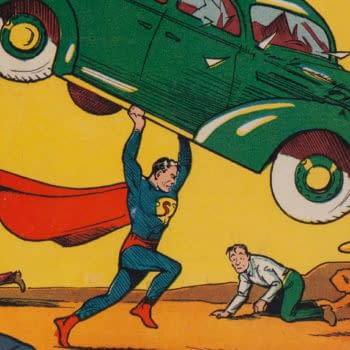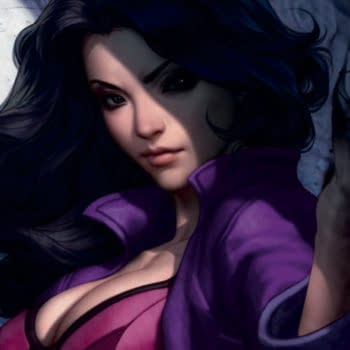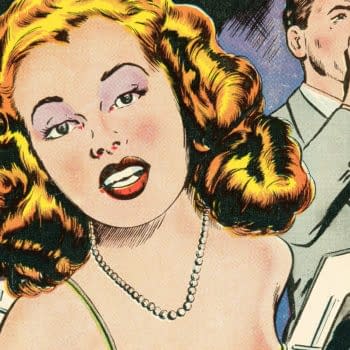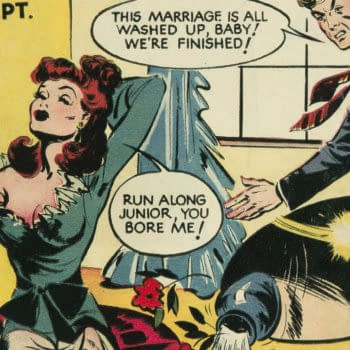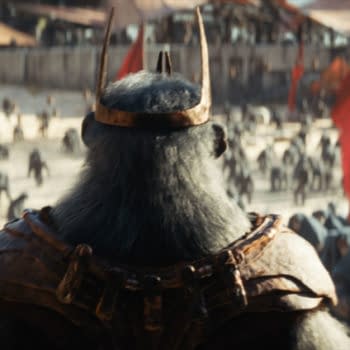Posted in: Movies, Recent Updates, Wonder Woman | Tagged: columbia, h.g. peter, james montgomery flagg, uncle sam, william moulton marston, wonder woman
Wonder Woman's Iconic Moment: The Pre-History Of The Character As Revealed In The Wonder Woman Film
The more we've seen and heard about the Wonder Woman film, the more I've become intrigued by its use of World War I to help set the stage for the character. We're so used to our iconic heroes emerging from the turmoil of World War II — a notion which echoes very strongly in comic books to this day — that you might think the First Great War is an odd choice here as part of a DCEU that seeks to define these comic book icons for current generations and beyond.
But it's actually very clever. Not only does it help explain some things we've already seen in the DCEU, but it's also an extremely astute usage of the Wonder Woman character's own pre-history. The battlefield concept art revealed by EW today is a good example of what they seem to be doing here. It's a general concept that was seen on countless World War I recruitment and propaganda posters, using iconic warrior-goddess characters such as Victory, Liberty, and most importantly — Columbia.
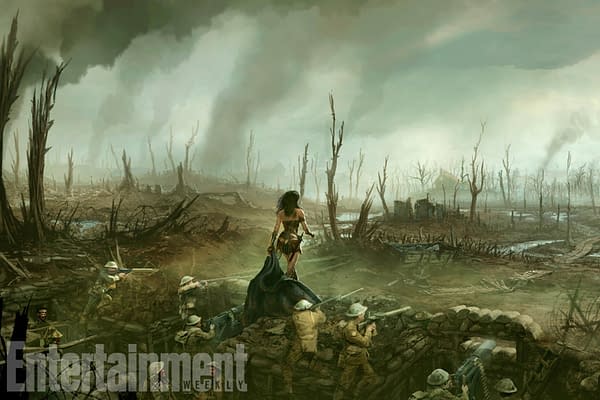
Concept Art
I've long thought that the influence of Columbia on Wonder Woman is a seriously under-discussed dimension of the character. Our historical focus on the character has always been on her complex mixture of influences via co-creator William Moulton Marston, Olive Byrne, a student of Marston's who became one of his wives, and to some extent Margaret Sanger — one of the most important feminist figures of the era, who also raised Byrne, and as such was very influential on both Byrne and Marston. All that is of course key, but there's also the background of original Wonder Woman artist H.G. Peter to consider.
H.G. Peter was born in 1880 and thus was of a prior generation to most of the comic book artists and writers who built the American comic book industry in the World War II era. He was an illustrator for several magazines during World War I, including Life (which is unrelated to the later, more famous incarnation of the magazine) and Judge, among others. A colleague of Peter's during the World War I era was now-legendary illustrator James Montgomery Flagg — who is best remembered today for his reinvention of the Uncle Sam iconography for Leslie's Magazine covers, including the famous "I Want You" image (which later became a recruitment poster). Little remembered today is the fact that Flagg did the same for another 19th century American icon named Columbia, who can be generally considered as a female counterpart to Uncle Sam. Both Uncle Sam and Columbia (and clearly Columbia-inspired figures) became a frequent subject of popular magazine covers and posters of various kinds, done by a variety of artists during the war.
Flagg was one of the most important American illustrators of his day, and there's little doubt that Peter would have been substantially influenced by such an artist who worked for the same set of publications. So why didn't Columbia make the jump to World War II in the same high-profile way that Uncle Sam obviously did? The answer is simple: Columbia Pictures adapted the Columbia iconography for use as their logo in 1928 (and note that familiar-looking headband on the version below, which appeared shortly after 1928). The character simply became better known for something else.
Columbia was used a bit in World War II, but not nearly as much as she had been during World War I, and she is very nearly forgotten today. In addition to the purposes and motivations that Marston and Byrne had for the character, it's hard not to conclude that Wonder Woman stepped into the void that warrior-goddess Columbia's post-World War I absense created. It's very interesting to see Patty Jenkins and Wonder Woman writers Allan Heinberg, Zack Snyder, and Jason Fuchs weave the character's historic background into her origin in the film.








